Office workers are tired of sitting on their 90-degree traditional office chairs. The long hours spent sitting on it results in long-term back pain, puts pressure on the neck and shoulders, and makes the environment uncomfortable to maintain focus on work. Moreover, this 90/90 degree angle causes slouching, tilts the hip backward, and the back gets rounded, causing serious health issues. With the advancement in technology, people have become more aware of workstation issues. They are now eager to make their office chairs comfortable to stay focused and healthy during work hours.
When looking for an office chair, most people are perplexed between a kneeling chair vs standing desk. To make your decision easier, I will discuss why you should choose a kneeling chair or when to opt for a standing desk.
The problems with ordinary chairs
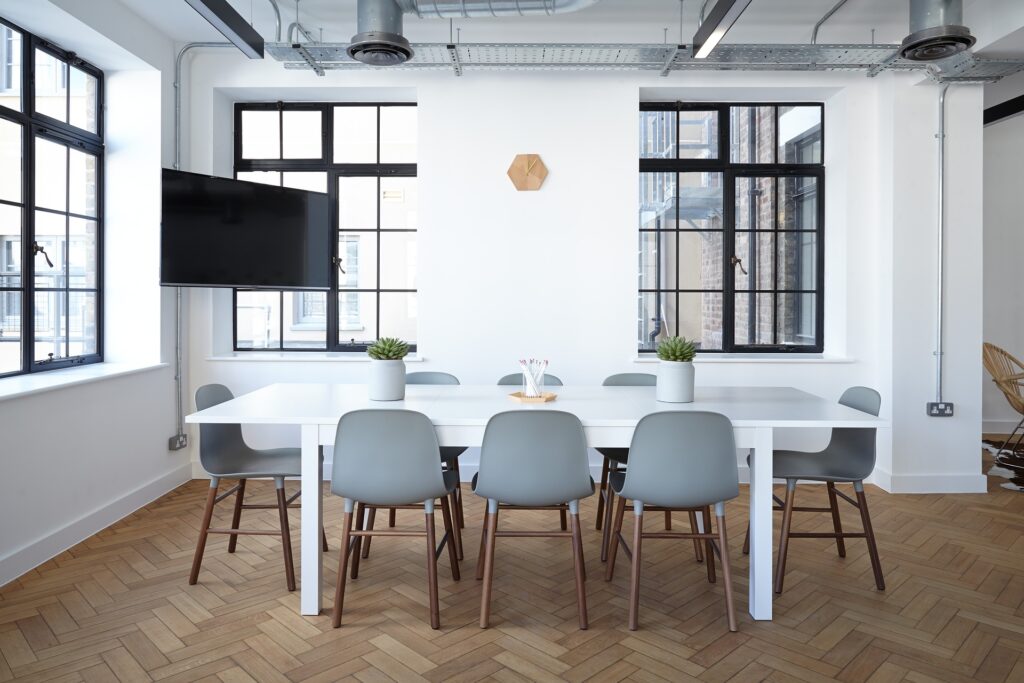
People spending long hours sitting on a traditional chair reported back pain problems, loss of focus, and other serious issues as they are not favorable to sit for long hours and increases strain on the muscles while working. The advancement in the chair industry gave them an alternative to their ordinary chairs and designed ergonomic work chairs to address their health concerns.
One of the most considerable options opted by office workers to make their workplace comfortable are kneeling chairs and standing desks.
People who spend much time with their backs bent forward are more likely to suffer neck and back pain. The angular seating shape of a kneeling chair helps to maintain good body posture and evenly distributes body weight by supporting a portion of the weight on the shins. A kneeling posture instead of sitting is the best way to avoid back pain while bending forward to draw, paint, or scribble.
It is challenging for a worker to perform tasks while standing, which is exacerbated when the desk is not ergonomically designed. Standing desks are a lifesaver for such employees. You can adjust the height of an ergonomic standing desk. Some standing desks include a standing desk converter, which allows you to convert your existing desk into a standing position so you can sit-stand and stretch your muscles during the workday.
What exactly is kneeling chair?
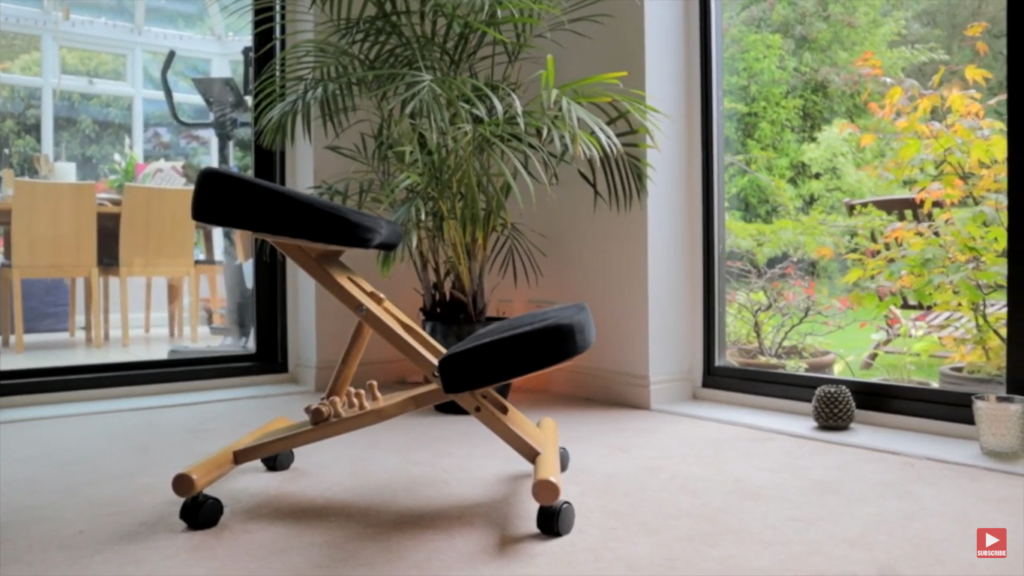
To help you better understand what kneeling chairs exactly offer, here is some basic information about them.
A kneeling chair is a forward-angled seat that allows you to kneel at a desk by dropping the angle of your thighs to about 60 to 70 degrees from vertical. This unique structure of a kneeling chair alleviates the lower back pain by shifting the pelvic position.
Long hours spent in a traditional office chair are more likely to result in serious health issues such as musculoskeletal disorders, hypertension, and a loss of focus at work. The kneeling chairs are suitable for the back as they encourage the natural S-curve of the spine, preventing hip and back pain and ensuring proper blood circulation during prolonged periods of sitting.
Pros of Kneeling chairs
It prevents back and hip pain
Are kneeling chairs good for your back?
Yes! Kneeling chairs can help to prevent back and hip pain.
When you sit in a traditional chair, your back is curved and your hips are flexed. This position puts a lot of pressure on your spine and canin your lower back.
The kneeling at desk maintains the spine’s S- curve shape, relieves strain on spinal discs, and modifies the pelvic angle to lessen back and hip pain.
Improved digestion
The kneeling position causes the pelvis to tilt forward, which contributes to adopting the correct spinal cord alignment. The lowered pressure on the internal organs helps the digestive system function effectively.
The tilted forward seating design of the chair lowers the pressure on the internal organs and helps the digestive system function effectively.
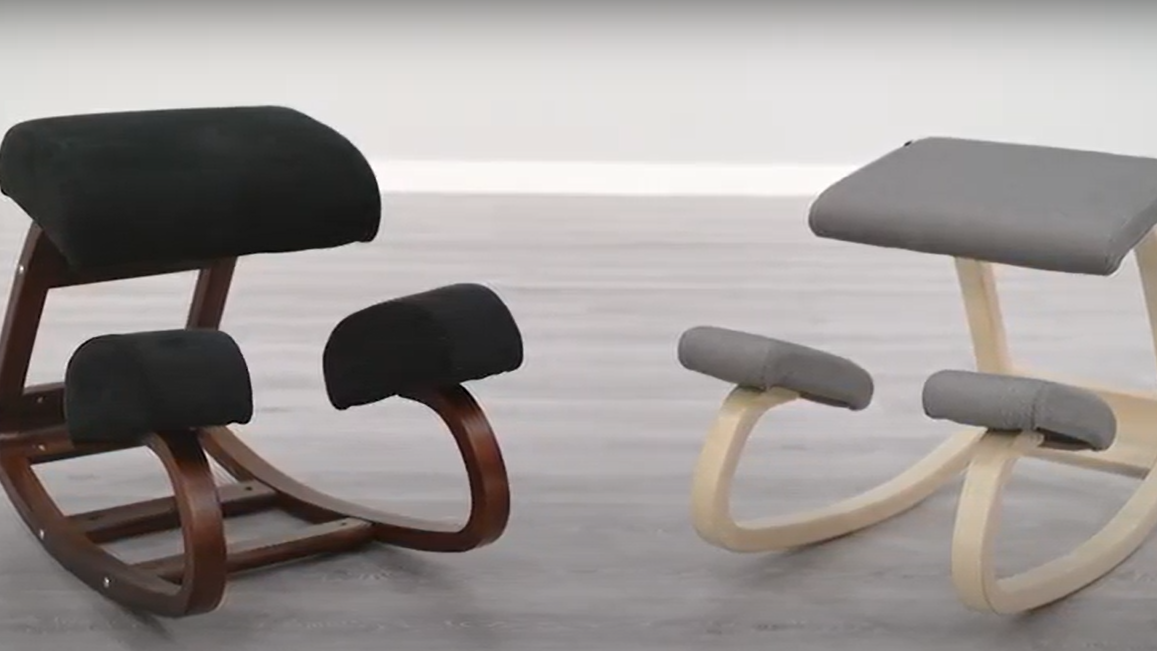
Better blood circulation
The sustained posture on kneeling chairs aids adequate blood circulation and prevents the veins from being squeezed.
Increases productivity
Without a productive atmosphere to work in, the human body cannot function effectively. The improved sitting position while kneeling at desk gives the human body the most comfort possible, strengthens muscles, and increases productivity over time.
Cons of Kneeling chairs
Not to be used for prolonged hours
Due to the angular, forward-facing seats, kneeling chairs are not meant to be used for extended hours. Switching between a regular office chair and a kneeling chair is recommended to get effective results.
Knee pain
Using kneeling chairs for an extended period might cause knee pain since a constant strain on your shin supports the body weight.
What exactly is standing desk?

A standing desk is a desk that allows you to stand up while working. It stands a few feet from the ground and flexibly lets you sit or stand during your work day. Standing desks are mostly provided with height adjustments to allow you to go from stand to sit position.
A study was conducted to understand the effects of a workplace sit-stand desk intervention on health and productivity. The results concluded that the intervention group significantly decreased their sitting time at work and had reduced neck and shoulder pain. There was a significant increase in subjective health, vitality in work-related engagement, and self-rated work performance over four weeks.
The standing desk not only aids in maintaining good posture but also provides its user with several advantages, such as a reduced risk of heart disease and weight gain.
Pros of standing desks
Adjustable
For workplace use, adjustable standing desks are best. It aids in keeping the desk at the proper height for productive standing work and can also be adjusted to a point where it may be paired with a kneeling chair to provide a sit-stand position while working.
Calorie Burn
We all know standing burns more calories than sitting, and a standing desk makes it happen! Working using a standing desk benefits a person by activating the circulation of enzymes that absorb the fat in our body.
The standing desk is an excellent deal for the weary office workers who do not get time to exercise daily.
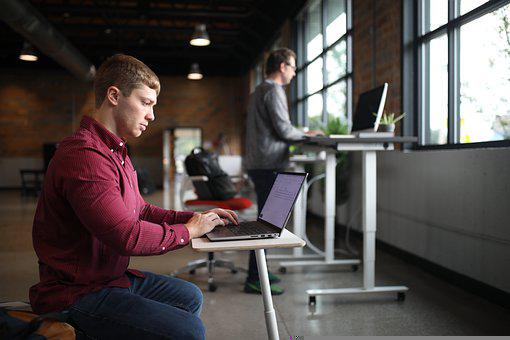
Improves Posture
The hips and spinal curves are stressed from long periods of chair sitting. The standing desk supports the upright posture of the spine. Simply adjust the height of your standing desk so that it is at eye level and your head, neck, and spinal curve are appropriately aligned.
Increase productivity
As it is impossible to work while continuously standing up, a standing desk addresses this issue by enabling the user to move around.
This small amount of mobility while working encourages a vibrant work atmosphere, enhances blood flow, fosters high energy levels, and boosts productivity.
Cons of Standing desks
Leg and feet pain
As it is not good to spend long hours sitting on a chair doesn’t matter whether your room has a perfect dehumidifier with an ergonomic chair and a cozy environment, the same goes for standing desks. The standing desk is not meant to be used for long hours as it results in leg and foot pain and causes heart diseases.
Varicose Veins
Varicose veins is a serious issue caused by prolonged standing hours. Standing in the same posture for hours affects the blood flow giving rise to varicose veins.
Kneeling chair vs standing desk – Comparison
You must better understand the benefits of kneeling chair versus standing desk at the workplace!
The kneeling chair relieves back discomfort by taking off the pressure from the back by supporting some of the body weight by the shins, and the standing desk enables users to work while standing. Standing desks and squatting seats each have advantages, but using them together yields the best results.
Here is a comparison of the kneeling chair vs standing desk and what they offer!
For long hours of concentrated work
Focusing on a task is made easier with a comfortable office desk. Although standing desks and kneeling chairs are intended to promote productivity, adopting either one by itself is unhealthy since it puts more strain on the body.
During long hours of focused work, switching between a standing desk and a kneeling chair is more likely to provide productive outcomes.
For Postural Syndrome
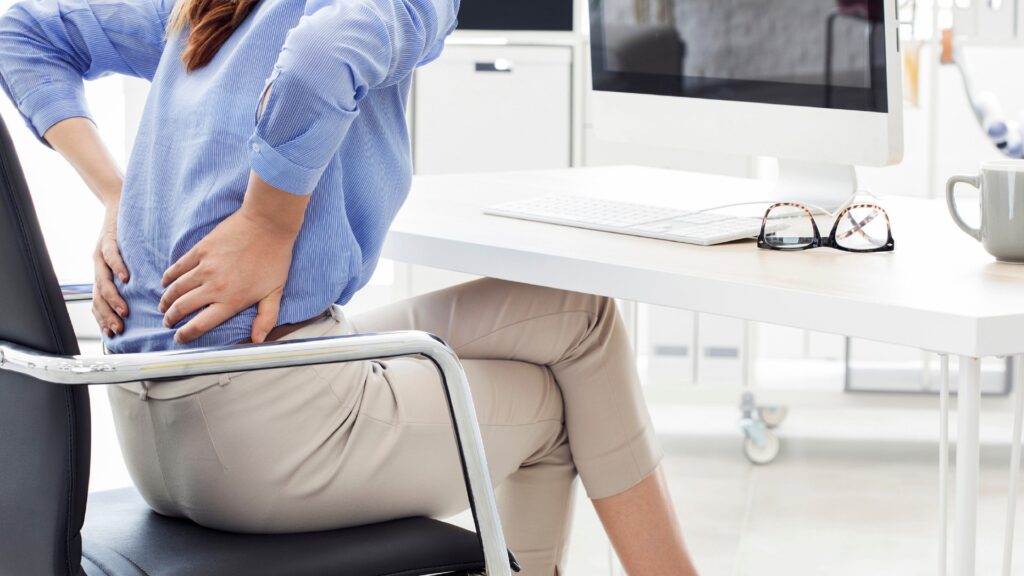
The majority of office workers fail to maintain a comfortable and healthful posture. Standing desks and squatting chairs allow one to work in their natural posture, preventing severe health problems.
For back pain prevention
The debate between a kneeling chair and a standing desk to prove which works better ends when switching between them offers the best results. It is best to opt for them at a workplace as it prevents one from sitting or standing for long hours in the same position and prevents back pain.
The best economical solution
Kneeling chair vs standing desk, employees are always looking to get an economical solution. Regarding the type of work, it is better to choose either a kneeling chair or a standing desk. The kneeling chair works best for those more exposed to tasks in which one bends forward, and the standing chair works best for the group who feels more productive using it and loves working in a standing posture.
Whatever you opt for, make sure not to spend long hours in the same posture!
✅ Kneeling chairs: An economical solution that takes less space, improves posture, and prevents back pain.
✅ Standing desks: A more expensive solution that is easy to adjust, improves productivity, best for people with neck pain and posture syndrome, and can be easily used with different accessories.
➡️ Purchase Best Ergonomic Standing Desks
➡️ Purchase Luxton Kneeling Chair | My #1 Pick
My verdict about kneeling chair vs standing desk
A kneeling chair and a standing desk perform well when utilized shortly for office employees. Leg and back discomfort, among other deadly health conditions, can result from spending long periods of time in one posture. Switching between them or altering your position when utilizing either of them is recommended to achieve the optimum results.
She is the content head at WorkplaceAmbitions.com, an all-rounder wordsmith with great interest (plus experience) in sharing such work-life related stuff. She keeps her words simple and master at crafting well-structured blog guides. Reach out to her at Elizabeth@workplaceambitions.com.
